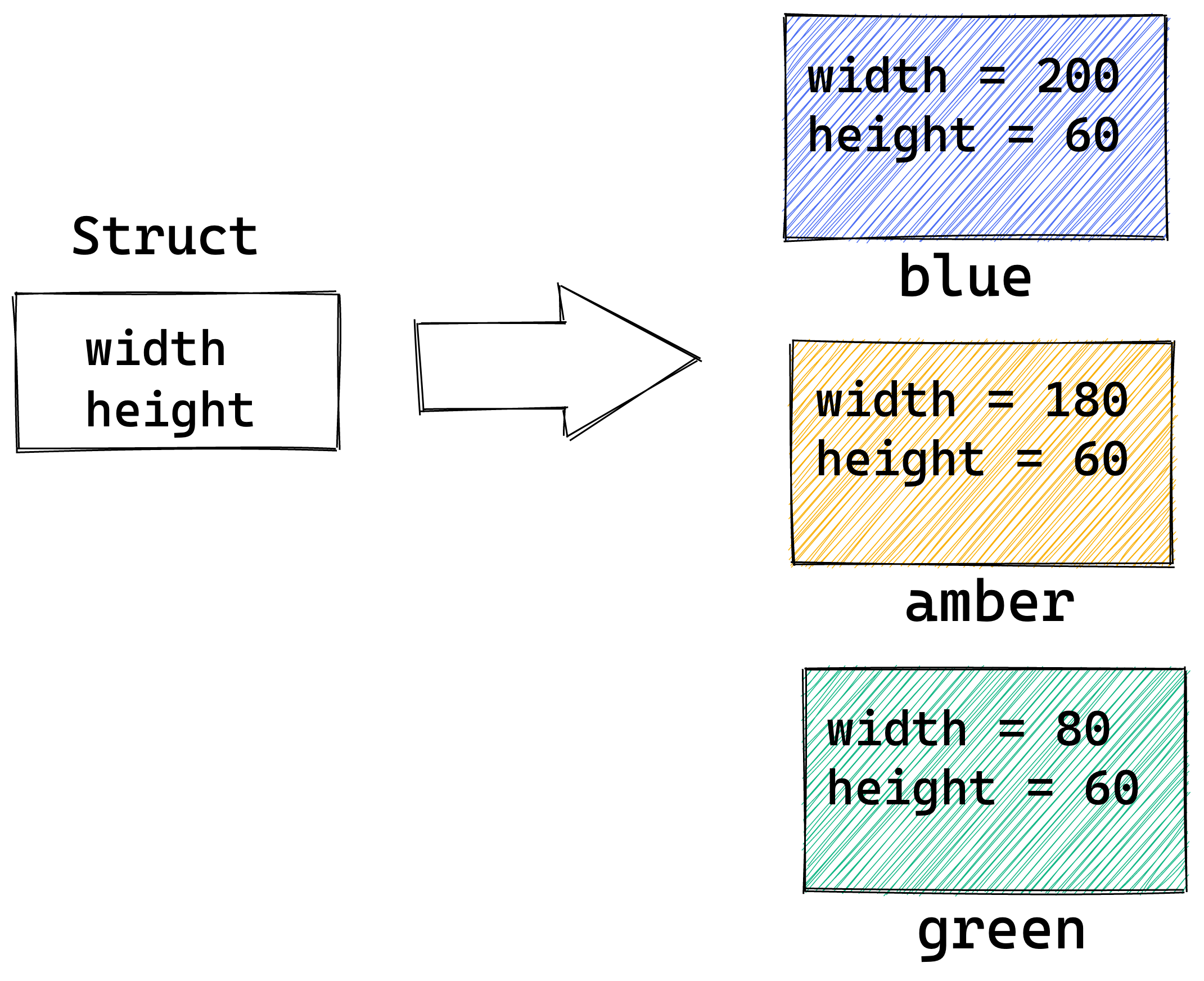Introduction to Structs
Introduction to Structs
What Are Structs?
- Structs consist of related items that potentially have different data types.
- Structs are similar to tuples in this regard. However, unlike tuples, you must define the data type of the item within the struct
- Structs help to create custom data types.

- Let’s consider a real life example. You know that a rectangle has two measurements, width and height. Suppose you have several rectangles which you can name. Once you have declared a rectangle items within the struct, you can initialize the values according to the type of rectangle. Suppose the dimensions of a rectangle may vary according to the color of the rectangle.
Declare a Struct
Structs are declared using a struct keyword followed by the name of the struct and then the body of the struct enclosed within curly braces. Within the body, the items of the struct aredefined as a key: value pair where keys are the items of the struct and value is the data type of each item.
Note: The struct construct can be declared anywhere, above or below the function that initializes it.

Naming Convention:
- The name of the struct should be in PascalCase, meaning, the first letter of each word in a compound word is capitalized.
- If this case is not followed, a warning, ⚠️, is generated by the compiler.

Note: The order in which you assign values to items does not matter.
Access Values from a Struct
To access any value from the struct write the struct name followed by the . operator and then the name of the item to be accessed.

Note: A struct instance is immutable by default. Therefore it cannot be updated unless made mutable. However, the values can be accessed.
Update a Struct Instance
A struct instance can be made mutable by adding a mut keyword after the let followed by the instantiation of the struct. Now that the struct instance is mutable, any item can be accessed using the dot operator and the value of the item can be updated.

- Example
The following example creates a struct named Course and defines three items of it: course name, course level, and course code.
//declare a struct
struct Course {
code:i32,
name:String,
level:String,
}
fn main() {
//initialize
let mut course1 = Course {
name:String::from("Rust"),
level:String::from("beginner"),
code:130,
};
let course2 = Course {
name:String::from("Javascript"),
level:String::from("beginner"),
code:122,
};
//access
println!("Name:{}, Level:{}, code: {}", course1.name, course1.level, course1.code);
println!("Name:{}, Level:{}, code: {}", course2.name, course2.level, course2.code);
//update
course1.name = "Java".to_string();
course1.code = 134;
println!("Name:{}, Level:{} ,code: {}", course1.name, course1.level, course1.code);
}
output
Name:Rust, Level:beginner, code: 130
Name:Javascript, Level:beginner, code: 122
Name:Java, Level:beginner ,code: 134
Quiz
Test your understanding of the basics of structs
- [ ] `.` dot operator
- [ ] `[]` subscript notation
# the name of the struct should be in which case to avoid compiler warning?
- [ ] PascalCase - [ ] snake_case
Last updated 25 Jan 2024, 05:11 +0530 .